If you are wondering what the importance of center-negative vs center-positive could be, stick around. Not only will you learn the difference, but you will understand the importance of this for musicians, particularly for those of us who have pedals and pedalboards that we don’t want to damage.
So If you are a guitar player, this is a topic for you, or anyone working with power supplies. The difference between some of these terms is not that hard to grasp, but not everyone is familiar with it. Let’s explain the difference quickly first, and then we’ll move into it after.
The primary difference between center negative and center positive lies in the polarity of the tip. When a plug or circuit is center positive, it means the tip of the plug is positive and the barrel around it is negative. If it’s center-negative, the tip is negative and the barrel is positive.
If you’re reading this article, you’re probably wondering what all of this means, and why it’s important to guitarists. It’s only important if you’re the type of guitarist, as I said earlier, who has a lot of guitar pedals. It’s really important in that case. Let’s take a look at this in a little more detail.
The Differences Between Center Negative And Center Positive
1) Center Negative Means That The Tip is Negative
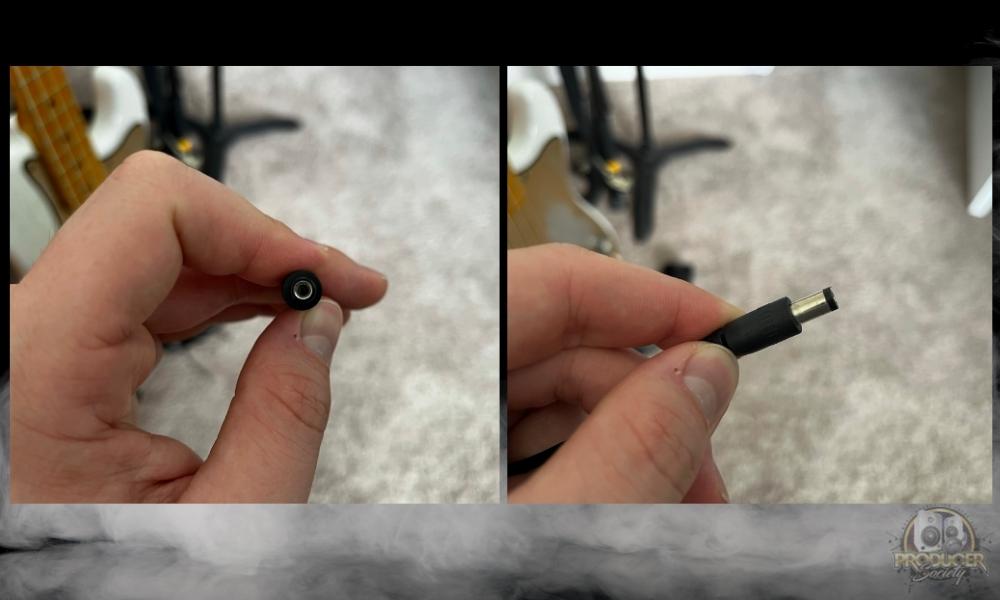
Almost all power supplies have a rating label that tells you about their polarity. Electrical polarity is just a way of describing the way electrons flow from one pole to another.
If there is a flow of electrical energy between two poles or two points, also called voltage, usually one of them will have more electrons than the other. According to Pedalboard Planet, the pole with more electrons is said to be the one with negative polarity.
If the other pole has fewer electrons, it means it’s the positively charged pole. If a wire is between these two poles, one positively charged and one negatively charged, there will be a natural effect whereby the flow of electrons wants to be pulled toward the other side.
This happens because the electrons are trying to bring balance between the two poles. This flow of charge is what causes electrical currents. How this relates to guitar pedals is that your power supply, particularly your DC power supply, has polarity.
There is a flow of electricity from your wall outlet to the guitar pedal via the power supply. And what the DC adapter does (really it’s an AC to DC adapter) is that it converts the alternating current into direct current, which is what your guitar pedal needs.
Alternating current means that the flow of electricity is alternating between positive and negative. It’s efficient to produce en mass for our homes, but it has to be converted into a direct current that flows from one direction to another, for efficient and practical use by our electronics.
If this is confusing to you, I would recommend checking out the YouTube video below, because they explain it a little better although, it does get a bit heavier during the middle of the video.
So, which part of the power supply is which? Simply put, the center negative tells you that the center tip of the barrel plug is negative and the barrel surrounding the tip is positive. In other words, it has a negative charge.
2) Center Positive Means A Positive Tip
A center-positive tip is the opposite of a center-negative tip. It means the barrel surrounding the tip is negative and the tip is positive. Most guitar pedals, as we’ll discuss later, almost always use center negative power supplies and tips.
Apparently, there was a time when older pedals used center-positive tips, but things have changed since then as Nenuaber pointed out in their helpful article.
3) The Polarity is the Opposite Signal
Because direct current (DC) power supplies deal with polarity, this means one side is negative and the other is positive, which is something we discussed earlier. Polarity tells you which conductor of your power supply has a positive voltage and which has a negative voltage.
The polarity symbol on a power supply can help you indicate whether the tip of the plug on the power supply is positive or negative. For example, take a look at what this center negative label looks like:
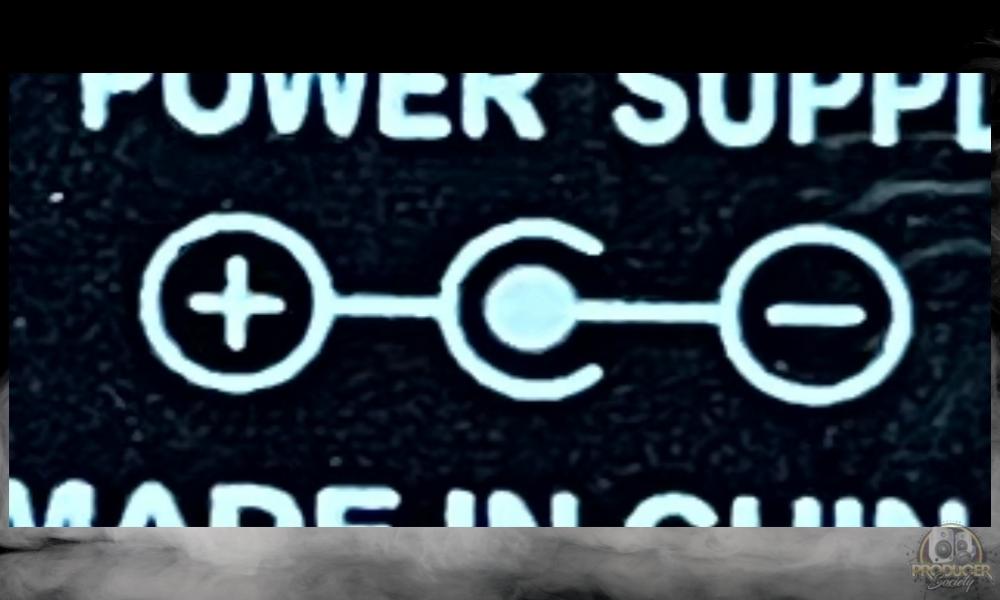
In order to reduce the risk of damaging your equipment, it is important for you to make sure you have the correct polarity running into the equipment you are trying to power.
It’s also important to ensure that you’re using the correct voltage as well as I discussed in my article on the MXR M238.
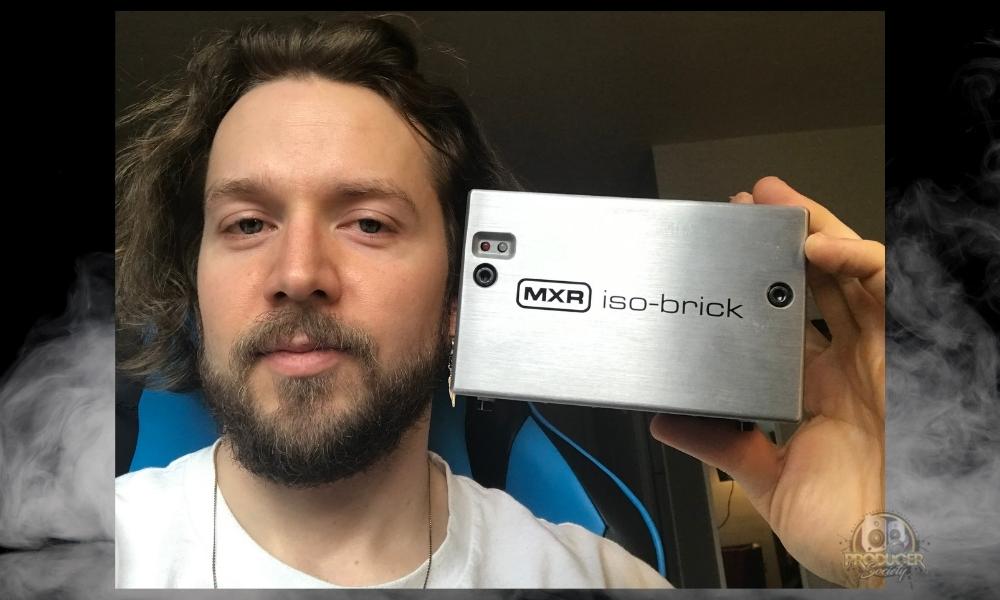
So if that’s what center negative looks like, what does center-positive look like instead? It looks something like this:
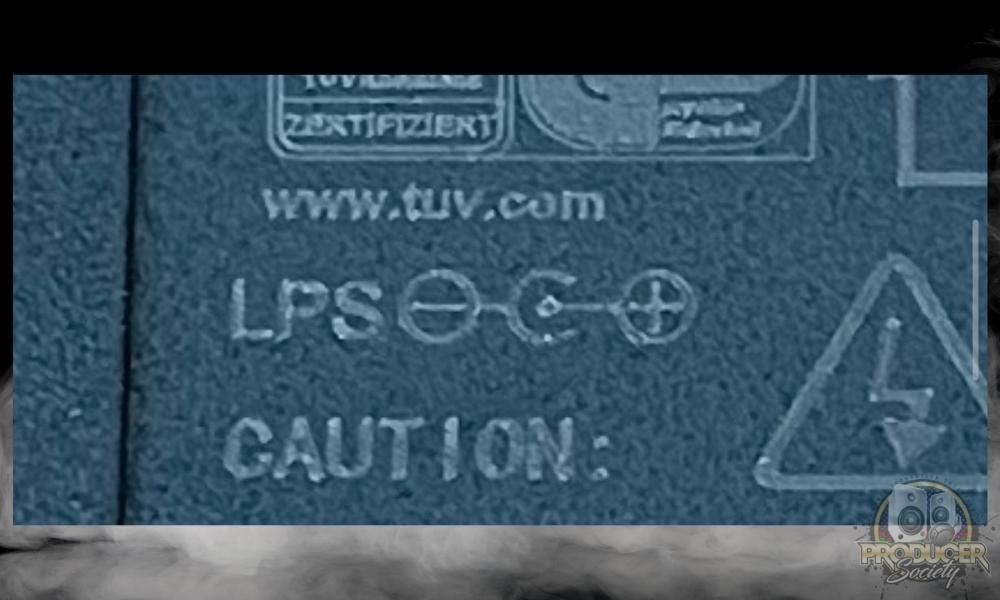
What Is Center Negative Used For?
Since we’re discussing this in the context of the guitar, it is well worth mentioning that center negative is used for many of our guitar pedals. It may seem like they all use center negative, but there are some that don’t.

If your guitar pedal is center negative, that means that it can be used with a 9-volt battery and/ or wall power. When the center pin of a center negative power source connects to your pedal, it bypasses the battery’s power.
That is because the negative polarity of the power supply connects to the negative polarity of the battery, and the two cancel each other out as this YouTube video explained. There are some people on Reddit who discuss the same thing.
What Is Center Positive Used For?
There is a debated conclusion among some guitarists that all pedals are center negative, but this Reddit article I researched, says different. For instance, one user says that nearly all of Eventide’s products are center-positive.
Contrary to what some people believe, center positive can also be used for many guitar pedals although it’s certainly not nearly as common. On the other hand, we use center positive for a lot more things in our lives.
For instance, center-positive sources can also include speakers, keyboards, and other electronics. If your guitar pedal is center-positive, make sure you have the correct power supply so you ensure that your guitar pedal works or is not damaged.
How to Spot The Difference Between Center Negative and Center Positive
I looked through some cables in my studio and found these power supplies to help you understand what to look for the next time you purchase either a center-negative or center-positive power supply. It’s pretty straightforward.
To figure out whether your supply is center-negative or center-positive, you just look at the polarity symbol and look for what one “+” or “-” is on the right-hand side. If it has a “-” on the right-hand side, it’s center-negative. If it has a “+” on the right side, it’s center-positive.
Center Negative
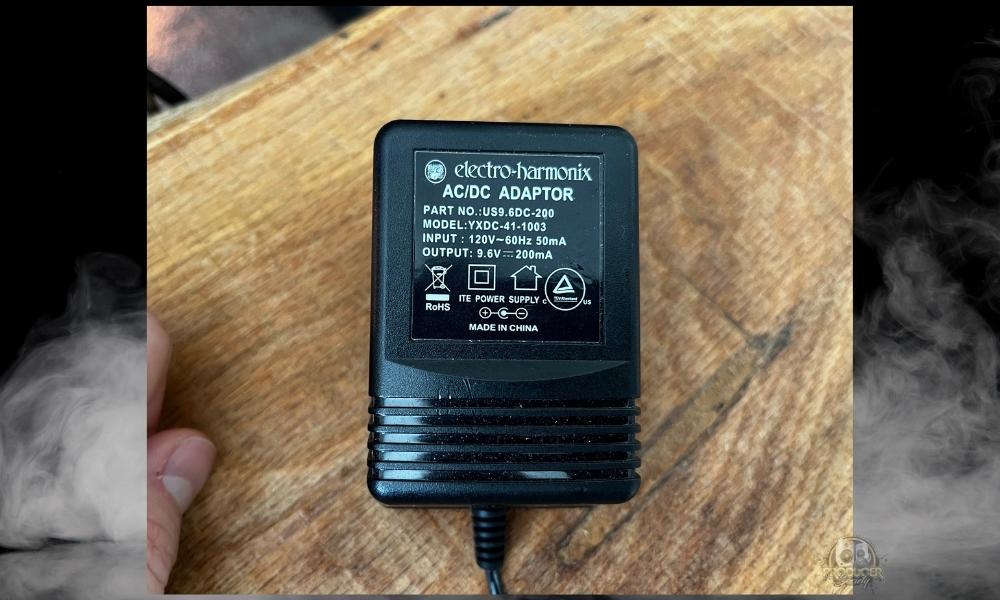
This is a power supply that came with my researcher’s Soul Food guitar pedal from Electro Harmonix. Notice the symbol (+) — (Center) — (-). Here’s what it looks like again, close-up (it’s the same image I used before).

Center Positive
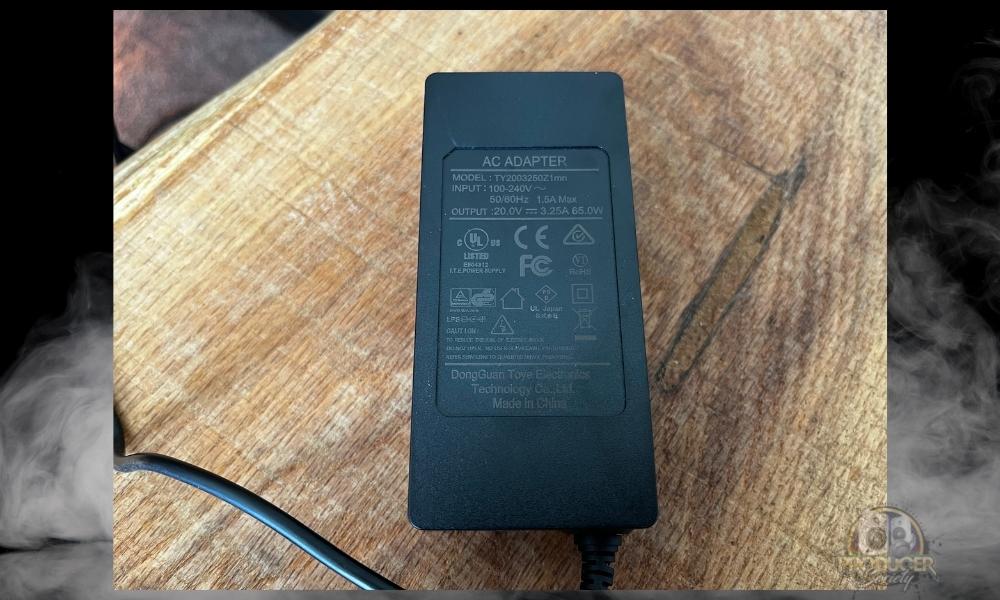
This is a power supply for my computer adapter to connect my researcher’s wireless mouse, keyboard, hard drive, interface, and monitor to my computer. Most of our computer electronics will use a center-positive adapter.

Important Things to Note About Guitar Pedal Power Supplies
1) It is Important to Use the Correct Power Supply
Not only is the correct power supply important, but also the correct polarity for your equipment. If the polarity is reversed, it might result in you damaging or potentially ruining your equipment.
The polarity determines which signal, either positive or negative, carries the higher energy level. This is how the conclusion is drawn on how to determine whether something is center positive or center negative.
Some power supplies can handle the different voltages, and the number of inputs, and can even convert voltage if you are gigging in a different country.


 Written By :
Written By :
